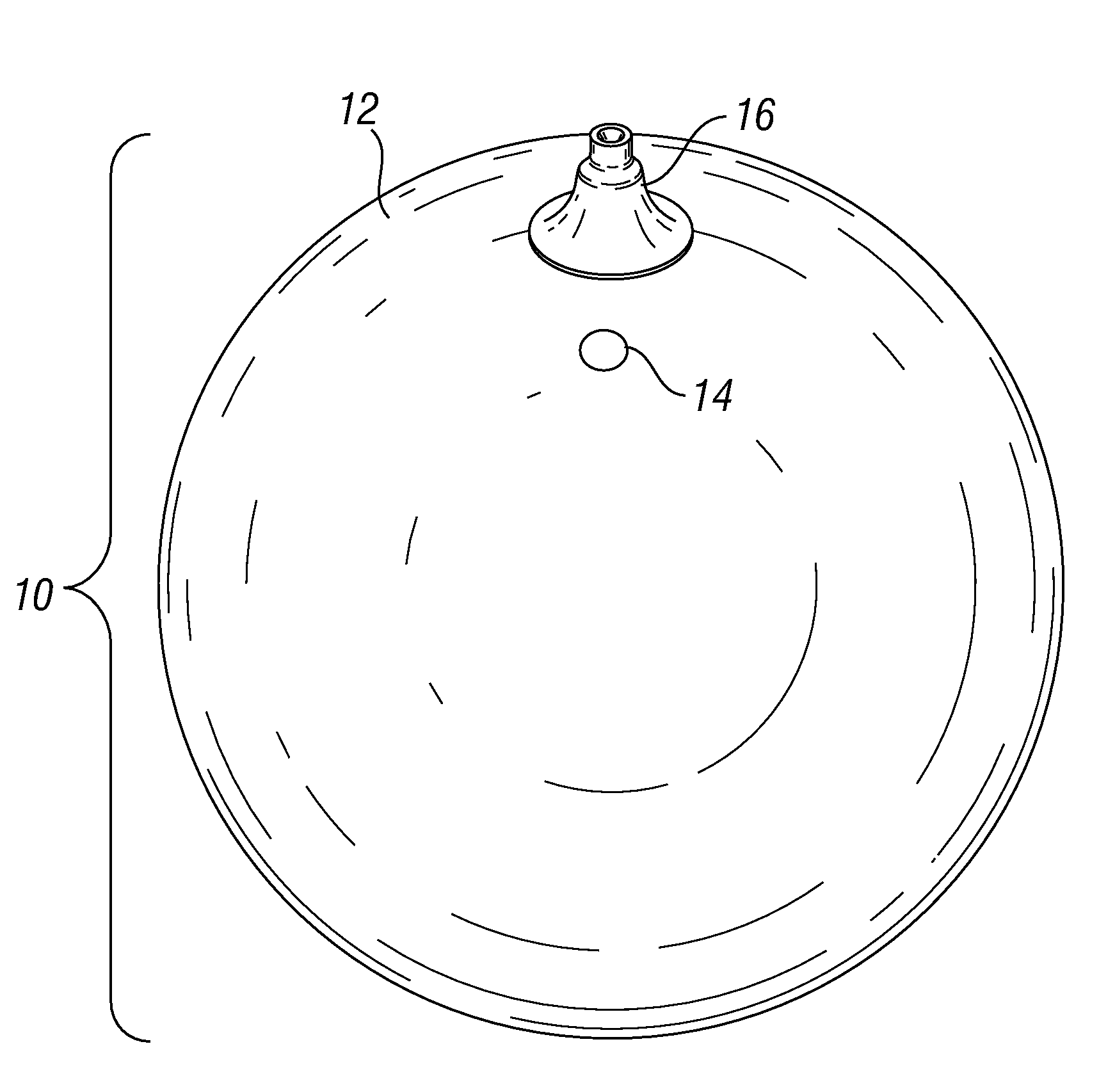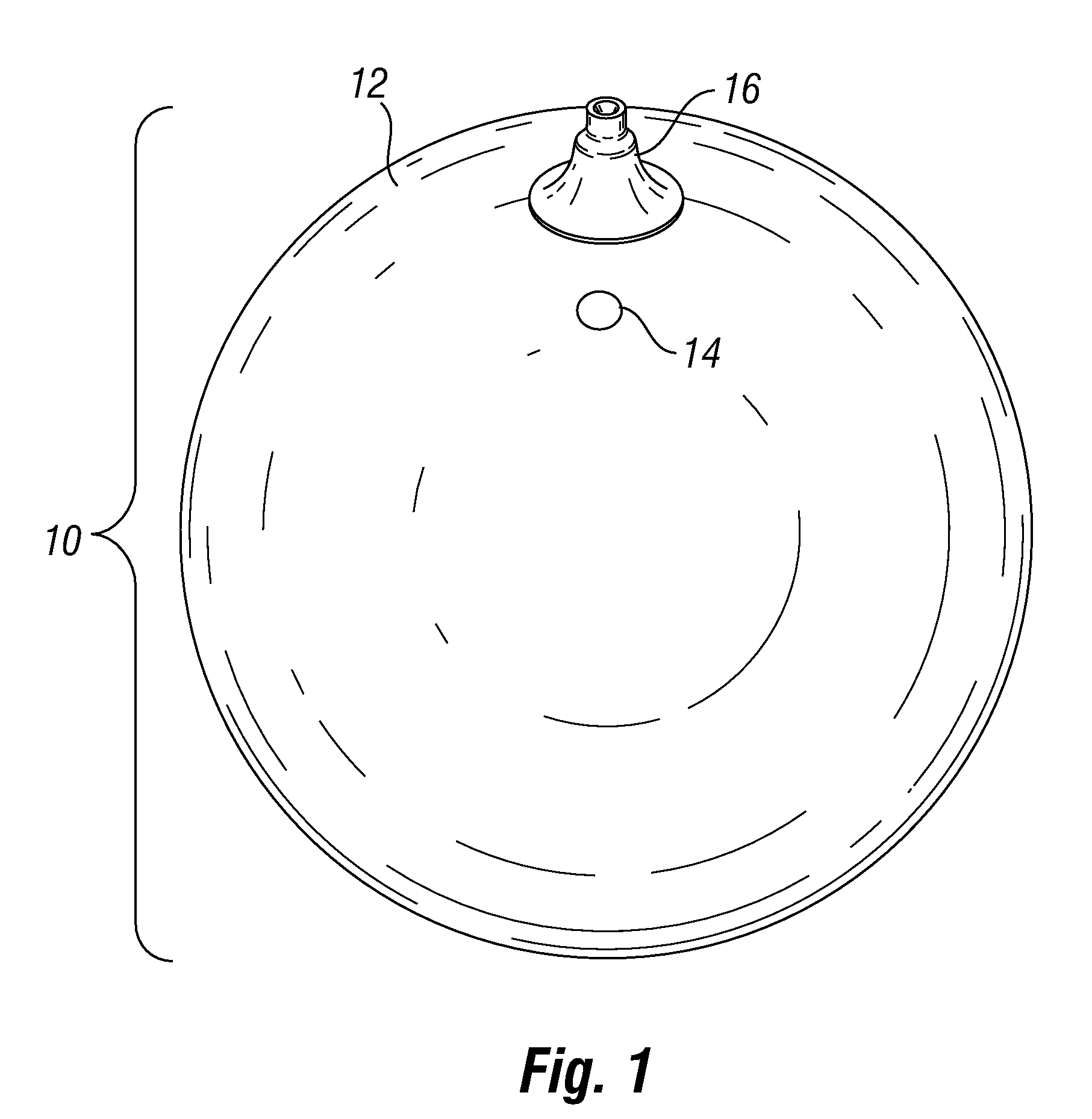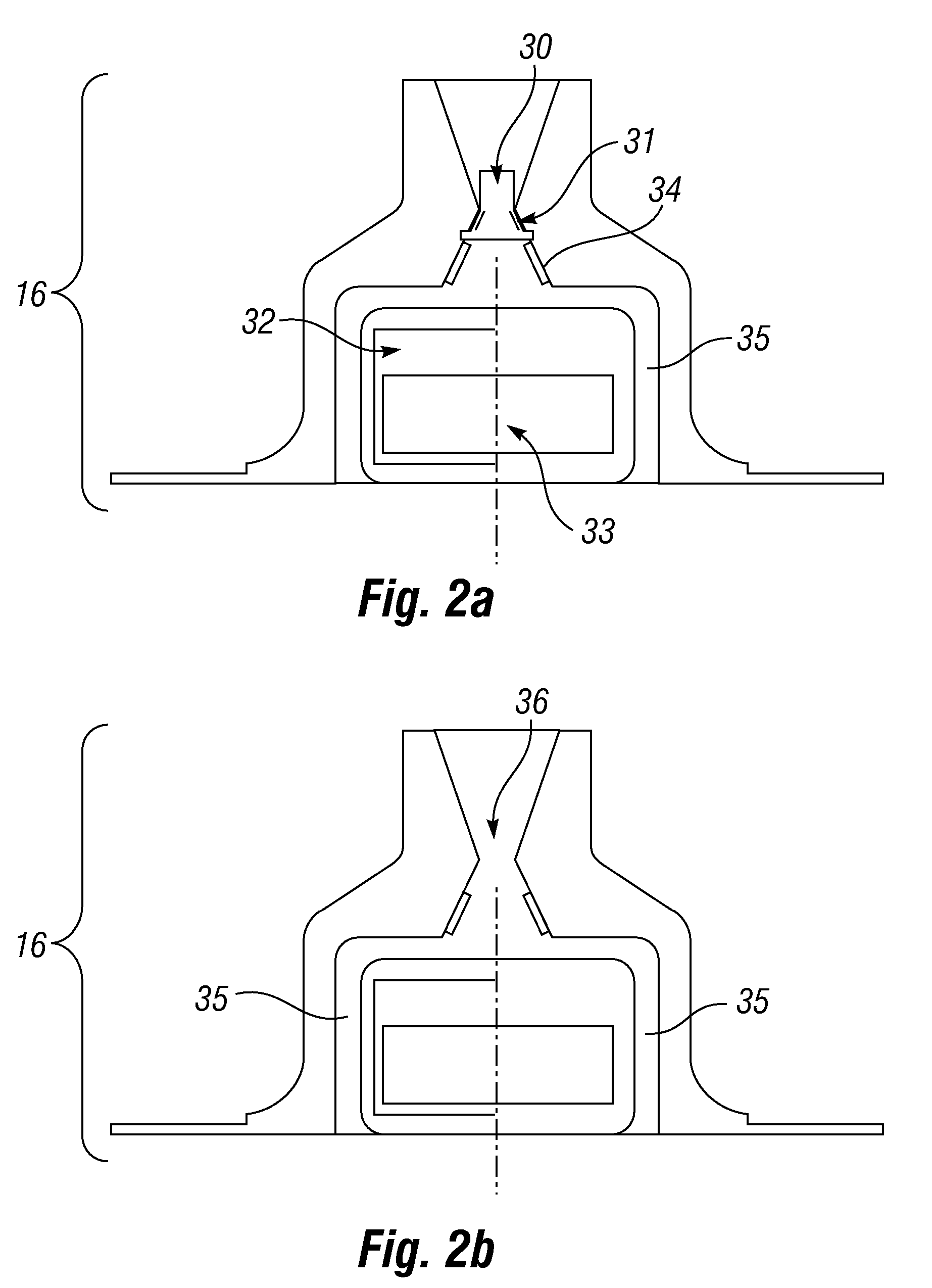Pressure sensing intragastric balloon
a pressure sensing and intragastric balloon technology, applied in the field of intragastric balloons, can solve the problems of causing a patient's stomach to erode the balloon to the point where it self-deflates, leaking, etc., and achieve the effect of facilitating passag
- Summary
- Abstract
- Description
- Claims
- Application Information
AI Technical Summary
Benefits of technology
Problems solved by technology
Method used
Image
Examples
example 1
Remote Deflation of an Intragastric Balloon Containing a Sealing Plug
[0089]In this example, the patient is an overweight male who has previously had an intragastric balloon inserted into his stomach. The intragastric balloon has been implanted for a full course of treatment for six months, and the surgeon is prepared to remove the balloon.
[0090]The removal of the balloon is performed in an outpatient setting at the doctor's office. Reference is made to FIGS. 2a and 2b for the remote deflation valve utilized in this example.
[0091]In order to open deflation valve 16, the physician activates the remote deflation mechanism from outside the body using a remote control 100, such as that depicted in FIG. 9. The physician holds remote control 100 near the stomach of the patient, and upon depression of a button, remote control 100 sends an activation signal through the patient's tissue to the microelectronic control 32.
[0092]Upon receiving the activation signal, microelectronic control 32 us...
example 2
Remote Deflation of an Intragastric Balloon Containing a Separable Valve
[0096]In this example, the patient is an overweight female who has previously had an intragastric balloon implanted. After implantation the patient has experienced significant undesired side effects resulting from the implantation, including nausea, vomiting, and general abdominal discomfort. Therefore, the patient desires to have the remote deflation mechanism activated, thus allowing the balloon to be passed.
[0097]As with the first example, the balloon removal is performed in an outpatient setting at the doctor's office. Reference is made to FIGS. 8a and 8b for the remote deflation mechanism utilized in this example.
[0098]In order to cause the intragastric balloon 90 to deflate, the physician activates the remote deflation mechanism using a remote control 100, such as that depicted in FIG. 9. The physician positions remote control 100 near the stomach of the patient, and upon depression of a button, remote con...
example 3
Remote Deflation of an Intragastric Balloon Containing a Valve Capsule
[0102]In this example, the patient is an overweight male who has previously had an intragastric balloon inserted into his stomach. The intragastric balloon has been implanted for a full course of treatment for six months, and the surgeon is prepared to remove the balloon.
[0103]The removal of the balloon is performed in an outpatient setting at the doctor's office. Reference is made to FIGS. 10a and 10b for the remote deflation valve utilized in this example.
[0104]In order to deflate balloon 109, the physician activates the remote deflation mechanism from outside the body using a remote control 100, such as that depicted in FIG. 9. The physician holds remote control 100 near the stomach of the patient, and upon depression of a button, remote control 100 sends an activation signal through the patient's tissue to the combined microelectronic control and power source 115.
[0105]Upon receiving the activation signal, the...
PUM
 Login to View More
Login to View More Abstract
Description
Claims
Application Information
 Login to View More
Login to View More - R&D
- Intellectual Property
- Life Sciences
- Materials
- Tech Scout
- Unparalleled Data Quality
- Higher Quality Content
- 60% Fewer Hallucinations
Browse by: Latest US Patents, China's latest patents, Technical Efficacy Thesaurus, Application Domain, Technology Topic, Popular Technical Reports.
© 2025 PatSnap. All rights reserved.Legal|Privacy policy|Modern Slavery Act Transparency Statement|Sitemap|About US| Contact US: help@patsnap.com



